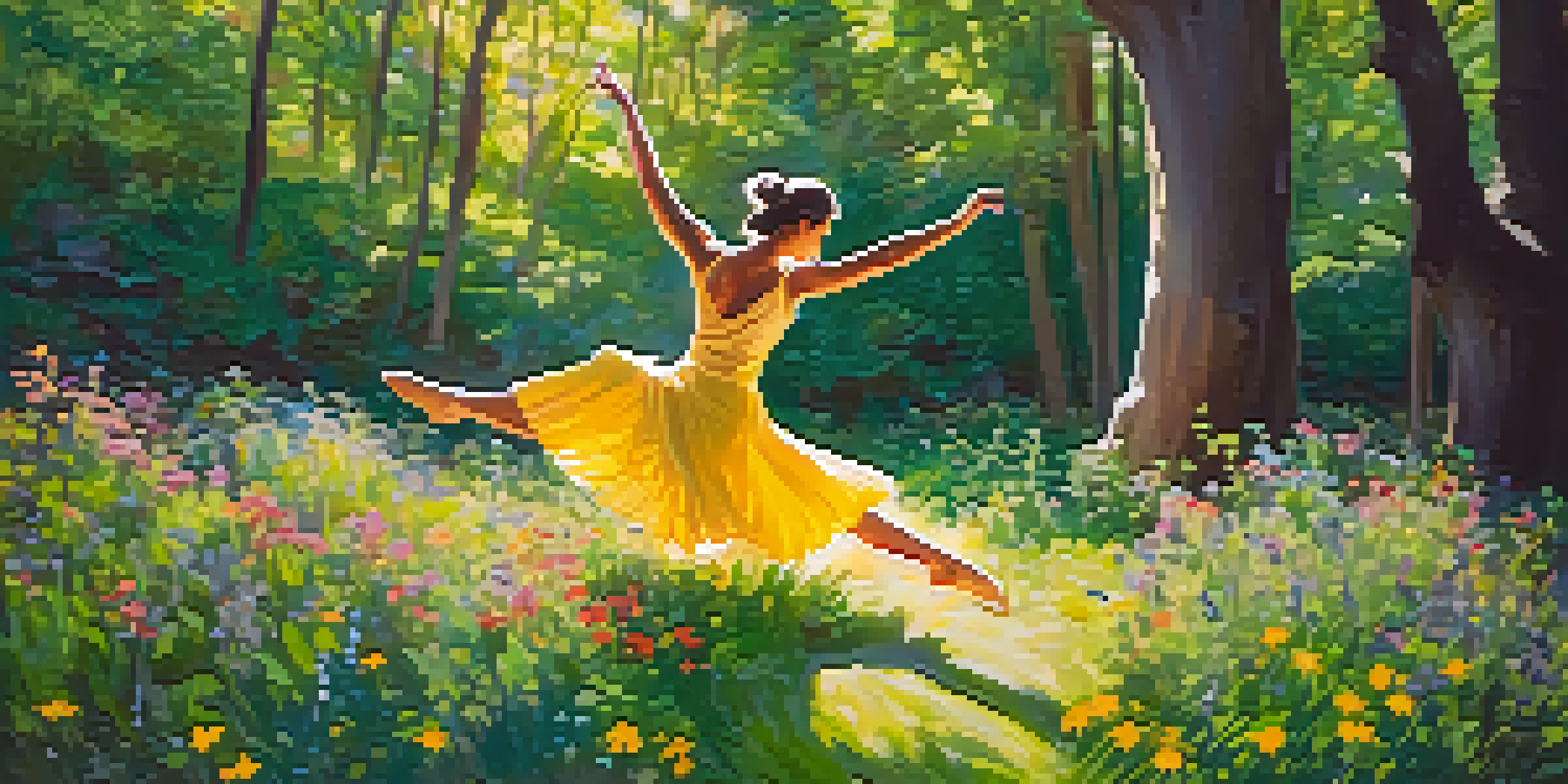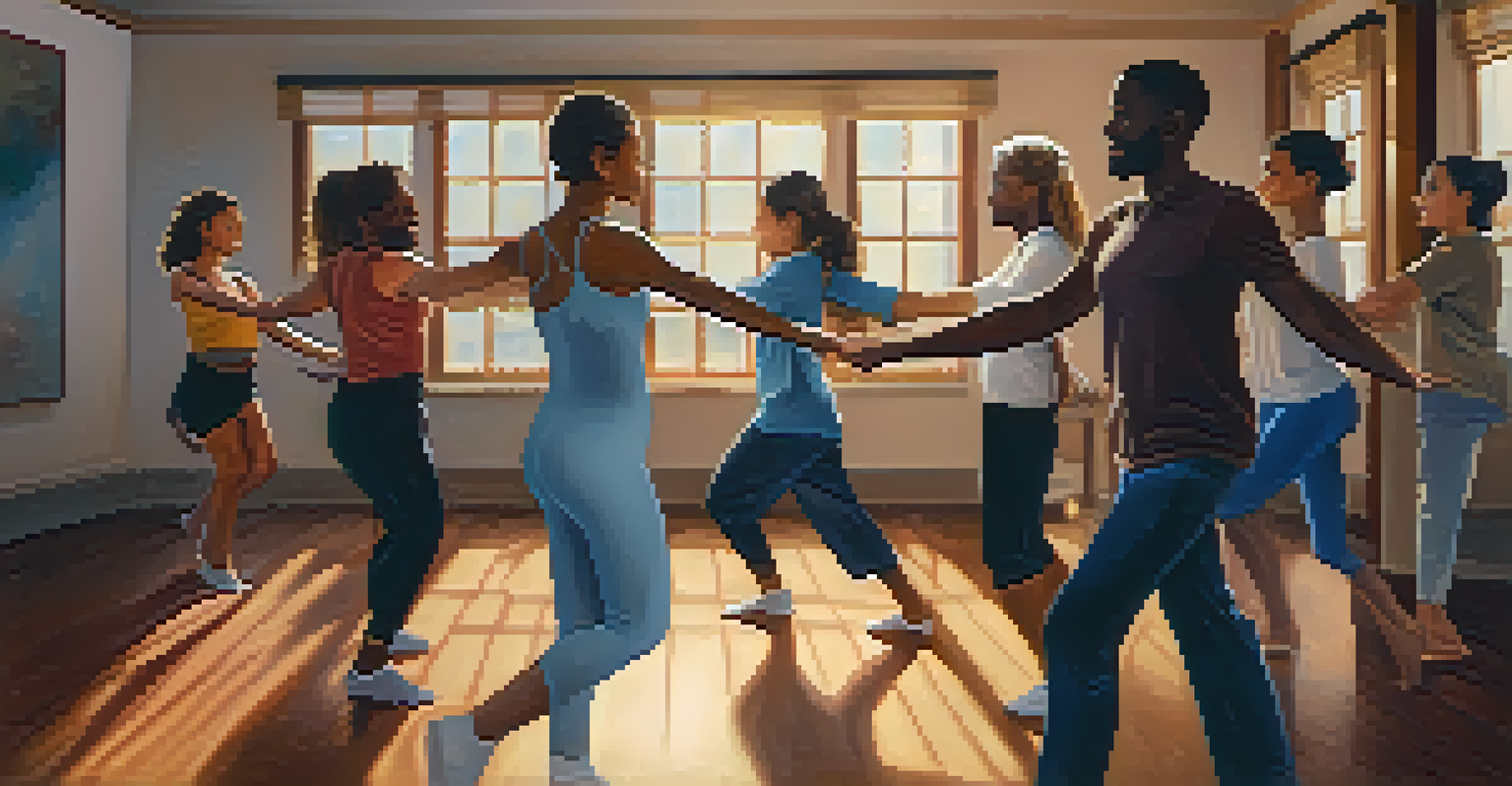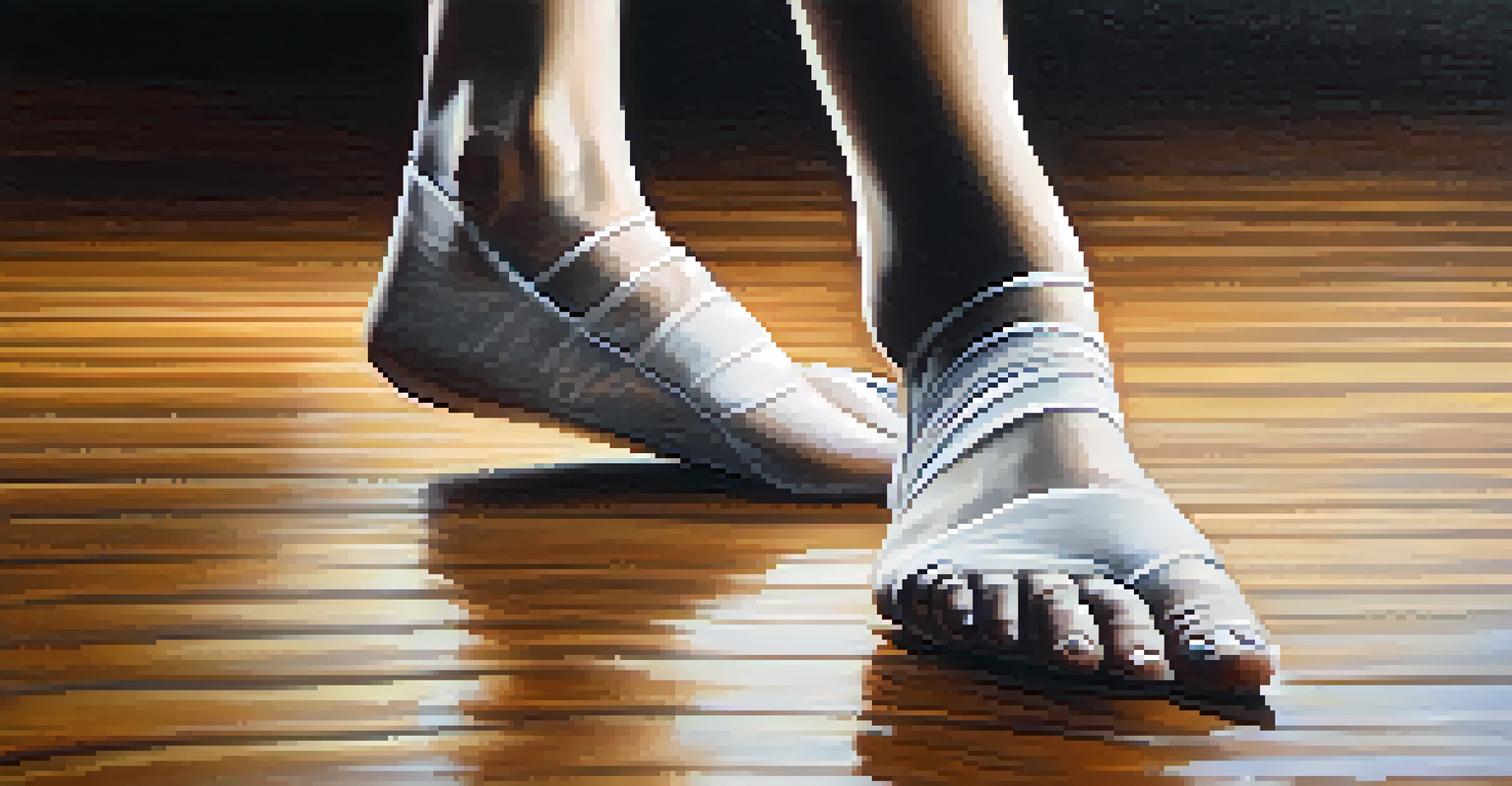The Connection Between Dance and Mindfulness Practices

Understanding Mindfulness: A Brief Overview
Mindfulness is the practice of being present and fully engaged with the moment. It encourages a non-judgmental awareness of thoughts, feelings, and bodily sensations. By focusing on the here and now, mindfulness helps reduce stress and enhance emotional well-being.
Dance is the hidden language of the soul.
This practice can take many forms, including meditation, breathing exercises, or even mindful walking. The key is to cultivate awareness without attachment or distraction. As you embrace mindfulness, you may find yourself more in tune with your emotions and surroundings.
Incorporating mindfulness into everyday activities can lead to a more fulfilling life. Whether it's savoring a meal or simply enjoying nature, being present enhances your experiences and promotes inner peace.
Dance: A Language of Movement and Emotion
Dance is often described as a universal language, allowing individuals to express emotions that words sometimes fail to capture. Every movement tells a story, conveying feelings of joy, sorrow, or celebration. Through dance, people can connect with themselves and others on a deeper emotional level.

From ballet to hip-hop, each dance style offers unique ways to express thoughts and feelings. This physical expression can be incredibly liberating, as it allows for creativity and personal interpretation. Dance encourages a sense of freedom, enabling individuals to explore their inner selves.
Mindfulness Enhances Dance Experience
Incorporating mindfulness into dance fosters present-moment awareness, allowing individuals to connect more deeply with their emotions and movements.
Moreover, dancing engages both the body and mind, creating a holistic experience. When you dance, you're not just moving; you're connecting with your emotions, memories, and the music, making it a powerful form of self-expression.
The Intersection of Dance and Mindfulness
At the intersection of dance and mindfulness lies a powerful synergy. Both practices encourage present-moment awareness and self-reflection, fostering a deep connection to one's body and emotions. When dancing mindfully, individuals can experience a heightened sense of awareness and joy.
Mindfulness isn't difficult, we just need to remember to do it.
Mindful dance invites participants to focus on the sensations in their bodies, the rhythm of the music, and the emotions they evoke. This practice encourages letting go of judgment and simply enjoying the movement, which can be incredibly liberating. It's not about perfection; it's about the experience.
Many people find that incorporating mindfulness into their dance practice enhances their overall enjoyment and satisfaction. By focusing on the moment, dancers can move with intention, creating a deeper connection to the music and themselves.
Benefits of Mindful Dance for Mental Health
Engaging in mindful dance offers numerous benefits for mental health and well-being. It can reduce anxiety, boost mood, and increase overall feelings of happiness. By fostering a sense of presence, dance can help individuals navigate life's challenges with greater ease.
The physical movement involved in dance releases endorphins, often referred to as 'feel-good' hormones. This natural high can contribute to improved emotional health, making mindful dance a powerful tool in managing stress and anxiety. Plus, the rhythmic nature of dance can be soothing and meditative.
Mindful Dance Benefits Mental Health
Engaging in mindful dance can reduce anxiety, boost mood, and promote emotional well-being through joyful movement and community connection.
Moreover, mindful dance encourages a sense of community and connection. Group classes or social dancing can foster relationships, reducing feelings of isolation and loneliness. This social aspect enhances the mental health benefits, creating a supportive environment for growth and healing.
Mindful Movement Techniques in Dance
Incorporating mindfulness into dance can be as simple as focusing on your breath. Taking deep, intentional breaths while dancing helps ground you in the present moment and enhances your connection to your movements. This technique fosters relaxation and allows for a more flowing dance experience.
Another technique involves setting intentions before you begin to dance. This could be anything from letting go of stress to celebrating your body. By establishing a clear intention, you can channel your energy and focus your mind, creating a more meaningful dance experience.
Finally, practicing body awareness is crucial in mindful dance. Pay attention to how different movements feel in your body, noticing areas of tension or ease. This awareness not only improves your dance technique but also deepens your connection with yourself.
How to Start Your Mindful Dance Journey
Starting your mindful dance journey doesn't require any special skills or experience. Begin by choosing a space where you feel comfortable to move freely. Whether it's in your living room or a dance studio, create an environment that feels welcoming and safe.
Put on some music that resonates with you and allows you to feel the rhythm. Start by simply swaying to the beat, allowing your body to move naturally. As you become more comfortable, let go of self-consciousness and allow your movements to express your emotions.
Accessible Mindful Dance Practices
The rise of online platforms is making mindful dance more accessible, allowing individuals to explore this holistic practice from anywhere.
Remember, there's no right or wrong way to dance mindfully. The key is to enjoy the process and embrace your unique expression. Each dance session can be a journey of self-discovery, helping you connect with your inner self and find joy in movement.
The Future of Dance and Mindfulness Practices
As more people discover the profound benefits of mindful dance, it's likely that this practice will continue to grow in popularity. Dance studios and wellness centers are increasingly offering classes that blend dance with mindfulness techniques, catering to those seeking holistic wellness. This trend reflects a growing awareness of the importance of mental health.
With the rise of online platforms, more individuals can access mindful dance classes from the comfort of their homes. Virtual classes provide flexibility and a sense of community, connecting people across the globe who share a passion for dance and mindfulness. This accessibility is transforming the landscape of wellness practices.

Ultimately, the connection between dance and mindfulness illustrates the beauty of movement as a pathway to self-discovery and healing. As we continue to explore this intersection, we can look forward to a future where dance serves as a powerful tool for emotional expression and mental well-being.